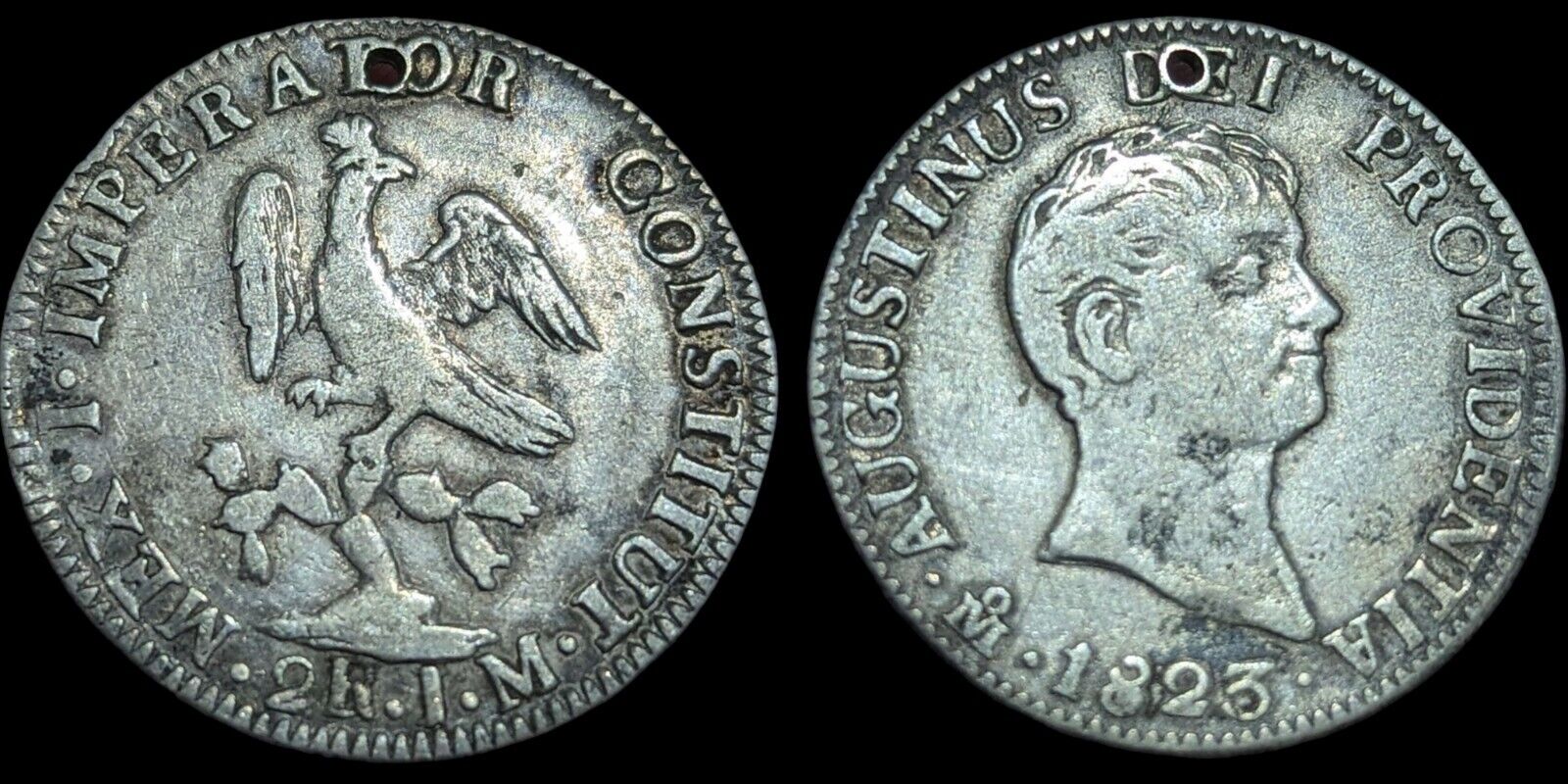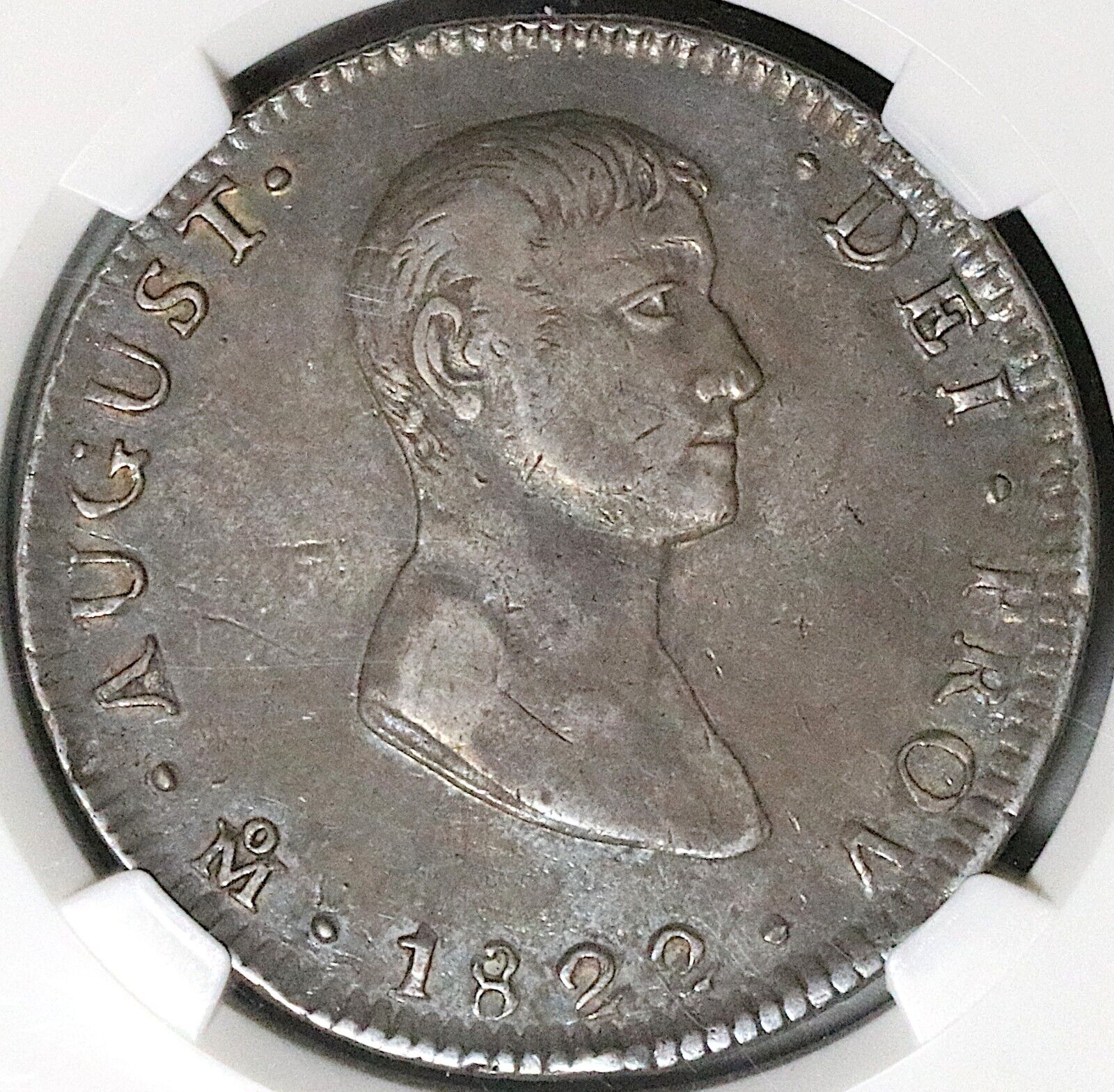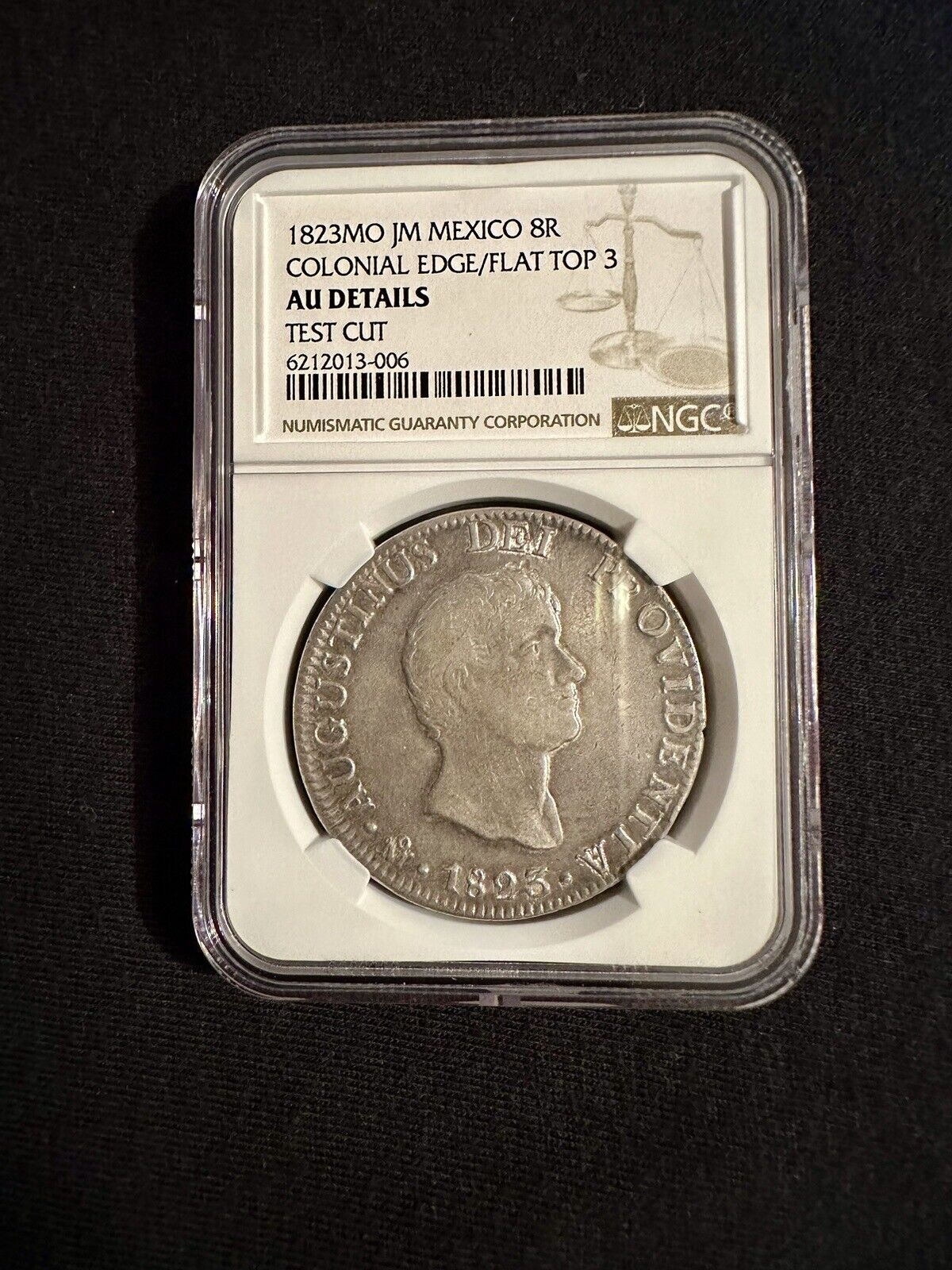-40%
Mexico Empire of Iturbide 1823 Mo Silver 2 Reales 2R Augustin I Wow Details Hole
$ 330
- Description
- Size Guide
Description
This Mexico Empire of Iturbide 1823 Mo Silver 2 Reales 2R Augustin I Wow Details Hole coin is a precious piece of history from the Empire of Iturbide (1821-23). Made of silver with a fineness of 0.813, this coin was manufactured in Mexico. The color of the coin is silver and it is uncertified.This coin is a great addition to any collection and is sure to impress with its historical significance. The coin is in good condition, with some signs of wear and an interesting hole that adds to its unique character. Don't miss out on the chance to own this wonderful piece of history.
1823, Mexico, Agustin
IIturbide
. Beautiful & Rare Silver 8 Reales Coin. PCGS AU+
Mint Year: 1823
Denomination: 8 Reales
Mint Mark: Mo (Mexico Mint).
Assayer: Joaquin Davila Madrid (JM)
Reference: 1823-Mo/JM, KM-310.
Rare!
Condition: Certified and graded by PCGS as AU (Details: Cleaned!)
Material: Silver (.903)
Weight: ca. 27gm
Diameter: 39mm
Obverse: Head of Agustin Iturbide as Emperor of Mexico right.
Legend: AUGUSTINUS DEI PROVIDENTIA . Mo (in monogram) . 1823 .
Reverse: Crowned (large) eagle standing on a cactus plant, which grows from an island.
Legend: MEX . I . IMPERATOR CONSTITUT . 8 R . J . M .
Agustin Cosme Damian de Iturbide y Aramburu
(September 27, 1783 - July 19, 1824) was Emperor of Mexico as
Augustin I
from 1822 to 1823.
In 1838, the government of Anastasio Bustamante gave him the posthumous title of "National Liberator".
While some historians give him great credit for acheiving Mexican independence without the bloodshed witnessed in the independence of other Latin American nations (e.g. Bolivar's Wars), Mexicans generally prefer to identify other national liberators, particularly Miguel Hidalgo, although they caused extreme violence and failed to achieve independence.
Iturbide was born in the city of Valladolid, now called Morelia, in the modern-day Mexican state of Michoacan. At the time it was part of the Viceroyalty of New Spain. He was son of José Joaquin de Iturbide y Arregui and Maria Josefa de Aramburu y Carrillo de Figueroa, both Spaniards of notable families.
He was an able military commander and in 1816 was put in command of the Spanish forces in the north of Mexico.
He gradually grew more sympathetic to the Mexican cause, however, and began secret negotiations with rebel leader Vicente Guerrero. In 1820 Iturbide joined the rebels, taking most of his loyal army with him. The resulting army was known as the Army of the Three Guarantees. In February 1821 Iturbide and Vicente Guerrero issued the Plan de Iguala, calling for a unified, separate, and completely independent Mexico.
They succeeded in rallying the other rebels together and driving the Spanish royalists from the country. Iturbide became the head of the new government junta. In an historic mistake, he signed an agreement with the departing Spaniards that they could leave with the value of their land holdings in hard currency. As Spaniards held title to most of the best land in the country, this quickly depleted Mexico of all its currency; even silver church bells and gold altarpieces were melted down in an attempt to pay off the debts, and Mexico entered the world as a new nation in a state of bankruptcy.
Iturbide was backed and influenced by conservadores (conservatives) who favored an independent Mexico with a monarch from one of the European royal families as head of state. When no European royals accepted Mexico's offer (as Spain still had hopes of taking Mexico back), Iturbide was persuaded by his advisors to be named Emperor in the manner of Napoleon I.
Iturbide did this with some genuine reluctance, since he sincerely believed in the Divine Right of Kings, and thought that as someone without royal blood he was unworthy. On the evening of May 18, 1822 he was proclaimed emperor by soldiers in the street. He appeared at his balcony and declined the honor without a resolution of Congress. Early the following morning Congress was assembled, and it voted 77-15 to name him emperor. On July 21, 1822, he was crowned "Augustin I, Constitutional Emperor of Mexico".
Iturbide attempted to run the nation as he had led the army, giving orders and commanding that those who disagreed with him be imprisoned. Opposition to his administration soon grew, and in 1823 various regional governors and military commanders, among them Guadalupe Victoria and Antonio López de Santa Anna, issued the "Plan de Casa Mata", calling for Iturbide's overthrow and declaring Mexico a Republic.
On March 19, 1823, Iturbide abdicated under duress and eventually agreed to leave the country without a fight. In exchange for this, he was granted a pension. He sailed to exile in Italy, then moved to London where he published his autobiography "Statement of Some of the Principal Events in the Public Life of Agustin de Iturbide". In 1824, amid growing instability, the Mexican government decided he was a threat to their power and decreed that should he ever set foot in Mexico again, he would be executed. Prior to news of this reaching him in London, Agustin decided to return in the hope of helping calm the growing instability and landed in Soto la Marina, Tamaulipas, on July 15, 1824. He was immediately arrested, and soon after executed, by the local authorities in the town of Padilla.
In 1838, the Conservative government of Anastasio Bustamante moved Iturbide's body to the Cathedral in Mexico City and reburied him in splendor with the title of "National Liberator".
In 1865, Iturbide's grandson Agustin de Iturbide y Green was adopted and named heir by the nation's only other emperor, Maximilian I of Mexico.
.





